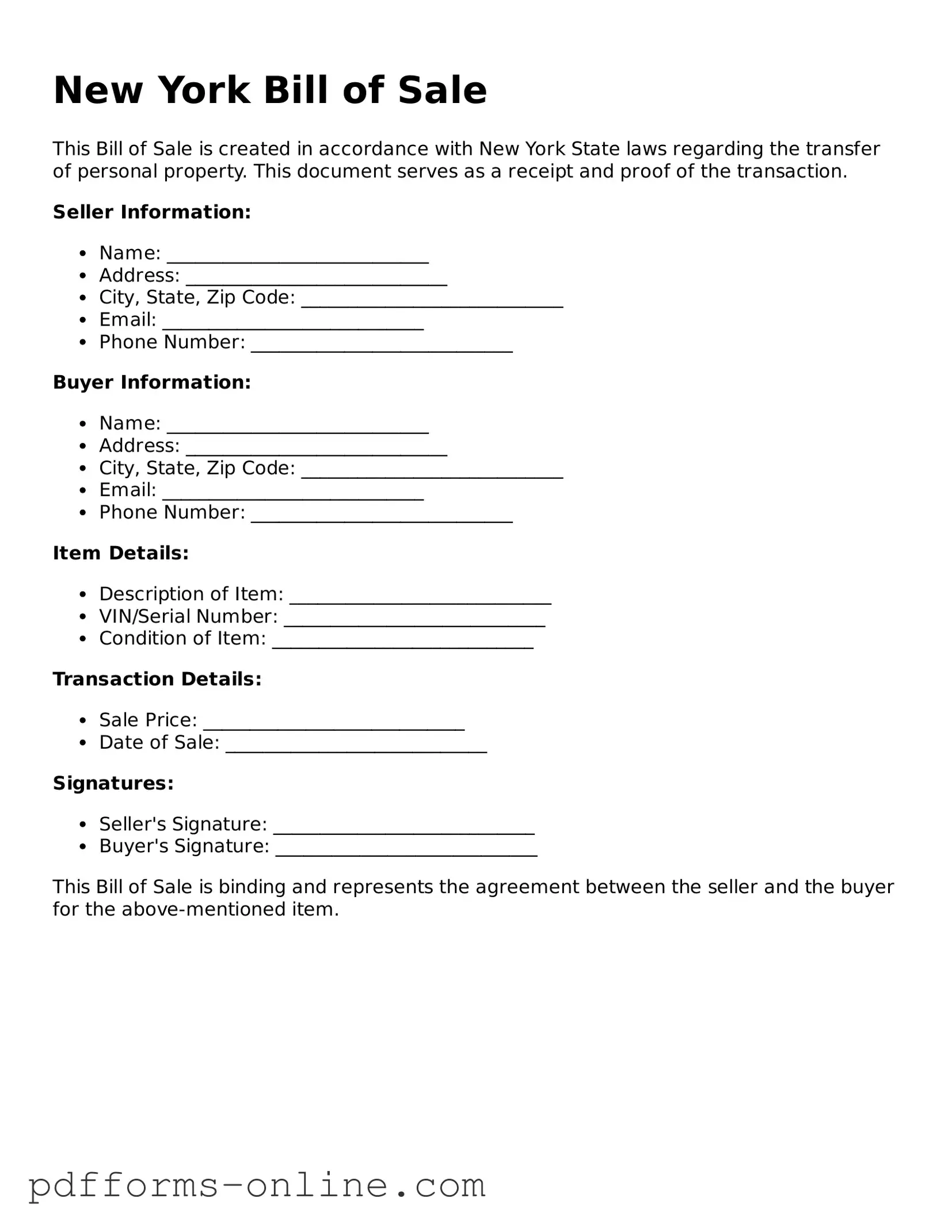The New York Bill of Sale is a crucial document for transferring ownership of personal property. It shares similarities with the Vehicle Bill of Sale, which is specifically designed for the sale of motor vehicles. Just like the general Bill of Sale, the Vehicle Bill of Sale includes details such as the buyer's and seller's information, a description of the vehicle, and the sale price. Both documents serve to protect the interests of both parties by providing proof of the transaction and can be used for registration purposes with the appropriate authorities.
Another document that resembles the New York Bill of Sale is the Equipment Bill of Sale. This form is used when selling or buying equipment, such as machinery or tools. Similar to the general Bill of Sale, it outlines the specifics of the equipment being sold, including its condition and any warranties provided. Both documents ensure that the buyer has a clear understanding of what they are purchasing and that the seller has documented the sale for their records.
The Personal Property Bill of Sale is also akin to the New York Bill of Sale. This document is used for the sale of personal items, such as furniture or electronics. Like the Bill of Sale, it includes essential details like the item description and sale price. This form is particularly useful for informal transactions, providing a record that can help resolve any disputes that may arise after the sale.
A Lease Agreement can be compared to a Bill of Sale in that both documents involve the transfer of rights. While a Bill of Sale transfers ownership, a Lease Agreement allows for the temporary use of property, such as real estate or vehicles. Both documents detail the terms of the transaction, including duration and payment terms, ensuring clarity and mutual understanding between the parties involved.
The Gift Receipt is another document that shares characteristics with the New York Bill of Sale. While a Bill of Sale typically involves a monetary transaction, a Gift Receipt is used when property is given without payment. Both documents can serve as proof of transfer, but the Gift Receipt emphasizes that no exchange of money occurred, highlighting the nature of the transaction as a gift.
The Affidavit of Sale is similar to the Bill of Sale in that it provides a sworn statement regarding the sale of property. This document is often used when there are concerns about the legitimacy of the transaction. Both documents serve to protect the interests of the parties involved, but the Affidavit adds an extra layer of legal assurance by being sworn before a notary public.
The Real Estate Purchase Agreement also bears similarities to the New York Bill of Sale, particularly in its role in transferring ownership. This document is more complex, as it involves real property rather than personal property. However, both agreements outline the terms of the sale, including price and property description, ensuring that both the buyer and seller are on the same page regarding the transaction.
In addition, the Warranty Deed shares commonalities with the Bill of Sale, especially in the context of real estate transactions. While the Bill of Sale is used for personal property, a Warranty Deed serves to transfer ownership of real property and guarantees that the seller has the right to sell. Both documents provide legal proof of ownership transfer, protecting the buyer’s investment.
Finally, the Promissory Note can be compared to the New York Bill of Sale in that it outlines the terms of a loan used to purchase property. While the Bill of Sale documents the transfer of ownership, the Promissory Note details the borrower’s promise to repay the loan. Both documents are essential in financial transactions, ensuring that all parties understand their rights and responsibilities.
